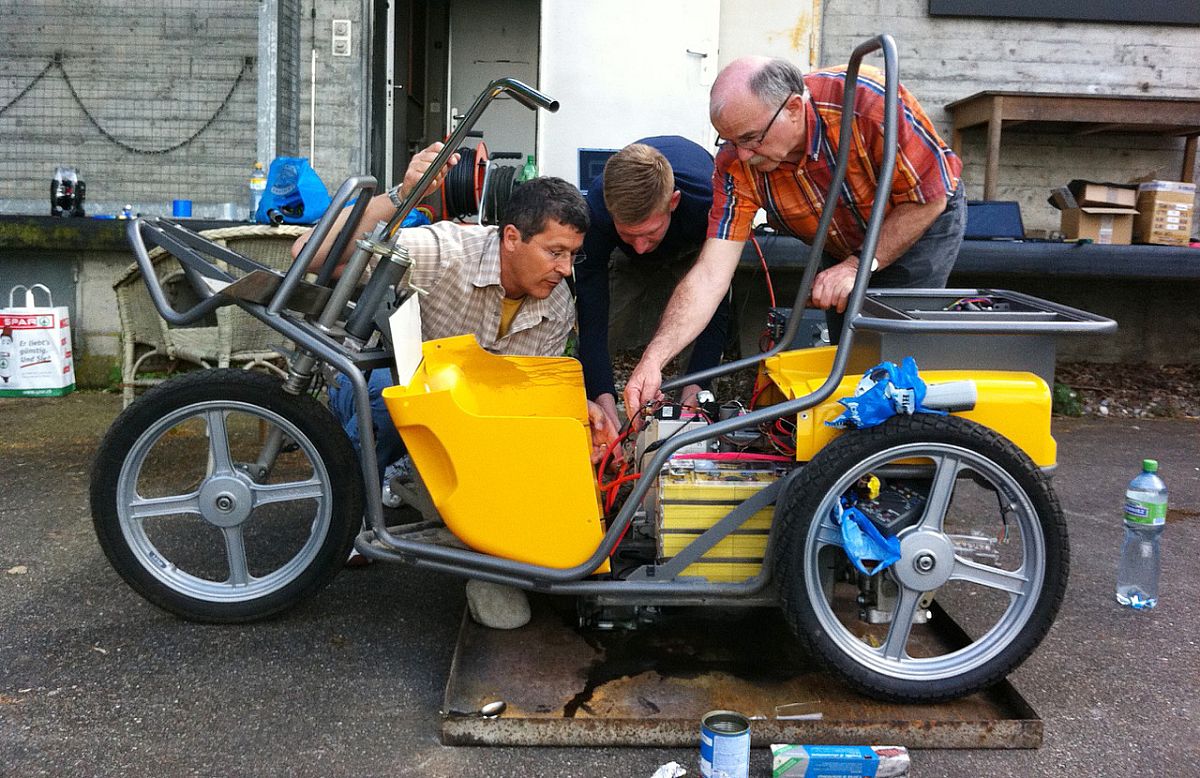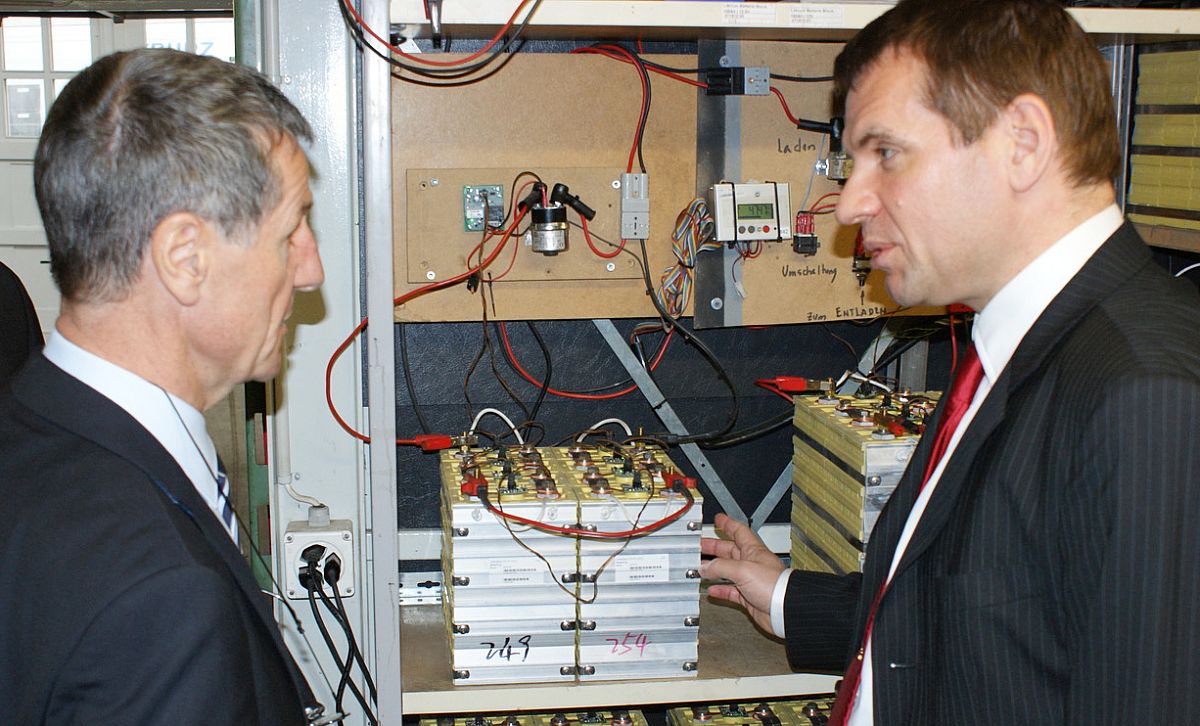Battery development

Batteries are at the heart of every electric vehicle. The first bikes with auxiliary motors had lead-acid batteries. I equipped Cheetah with NiCd batteries, which had significantly more energy per kg of battery weight and could also deliver much more power. The battery was the main reason why Cheetah had good acceleration and agility. For the seniors vehicles, I switched back to lead-acid batteries. I tested many types until I had chosen the best batteries for me. Unfortunately, every now and then the batteries, mostly from a rather small manufacturer, were no longer available and I had to change the product. We built our own cycle test stands. The first test stands discharged the batteries evenly using resistors. Simply put, we built a battery-powered heater. Later, we also built test rigs to simulate vehicle operation. As an alternating load, we used a huge fan formerly used in the spinning mill at our site, which was driven by an electric motor and had about the same power as our vehicles. Strangely enough, I noticed that on the test benches with the fixed loads, the batteries could achieve many more charging cycles than in practice. The manufacturers indicated up to 500 cycles, which in practice would have meant a total lifetime of 25'000 km with a range of 50 km. In practice, we had to change defective batteries at 1'000 - 2'000 km. Why? I started experimenting. I also spoke with others who agreed: With the right charging method, a battery could last much longer. Through many experiments, we were able to increase the maximum battery life in practice to up to 200 cycles. We worked our way deeper and deeper into the subject. We found that in the optimal case, a battery had to be recharged in a similar way to how it was discharged. With the help of a pulse pattern, we were able to optimise this charge.
A next idea was to install a chip in each battery that monitored some values to be able to accurately determine not only the state of charge, but also the state of health, abbreviated as SOH (state of health) of a battery. We wanted to use the chip to measure various parameters, including the acid density. With an evaluation device, it should be possible to immediately evaluate the condition of the battery in terms of charge and service life, and whether any misuse or improper storage shortened its service life and could have led to a reduction in its durability. This information could also be called up very easily in the vehicle's on-board electronics. We made a functional model of this chip and the evaluation device. I approached various battery manufacturers with the idea. To my amazement, they all refused. One battery manufacturer told me in confidence that I had developed a chip that no battery manufacturer in the world really wanted. It would be too easy to detect possible production defects or faults and hold the battery manufacturer liable. Either all battery manufacturers will work with my chip or none at all. He suspects the latter.
The battery manufacturer was to be proved right. No one was willing to install my battery monitoring system in the cells they produced. Nevertheless, I had learned a lot.
One day Frank Loacker had some yellow blocks on his desk: These were new Thundersky lithium batteries. He had obtained them through contacts. They were better than the lead batteries we used by a factor of two and better than my NiCd cells, which are no longer allowed to be manufactured. Aha? That's what I wanted to see. We installed the blocks in my own PLUS. The vehicle became lighter, more manoeuvrable and the range increased. But after a few cycles, the batteries could no longer be charged. Why? We ordered new blocks. Obviously, we had allowed too high currents during the braking process. If braking causes the voltage of the lithium cells to rise above the maximum value even for a short time, the cells are immediately damaged. At least we had our extensive test equipment from all the lead-acid battery tests and could easily examine the new lithium systems. To everyone's amazement, the first defective cells regenerated again and were to provide good service in my PLUS for many years to come. Frank Loacker developed a simple system that monitored each individual cell, balanced the charge when fully charged and ensured that the cells could not be destroyed. The batteries performed excellently. Fortunately, we had some very frequent drivers among the seniors who had covered thousands of kilometres in a short time. They were enthusiastic about the new batteries.
This technology was the last missing key to being able to build vehicles for the post office and other industrial customers. In one fell swoop, the batteries were durable: instead of a few 1000 km, the lithium battery systems enabled many 10'000 kilometres to be driven. We had found the missing key to be able to build our vehicles for the tough postal service!

I learned from this:
- The battery is the real heart of every electric vehicle
- A lot can also be learned from failure
- If you keep developing the same products over the years, they will get better and better.
